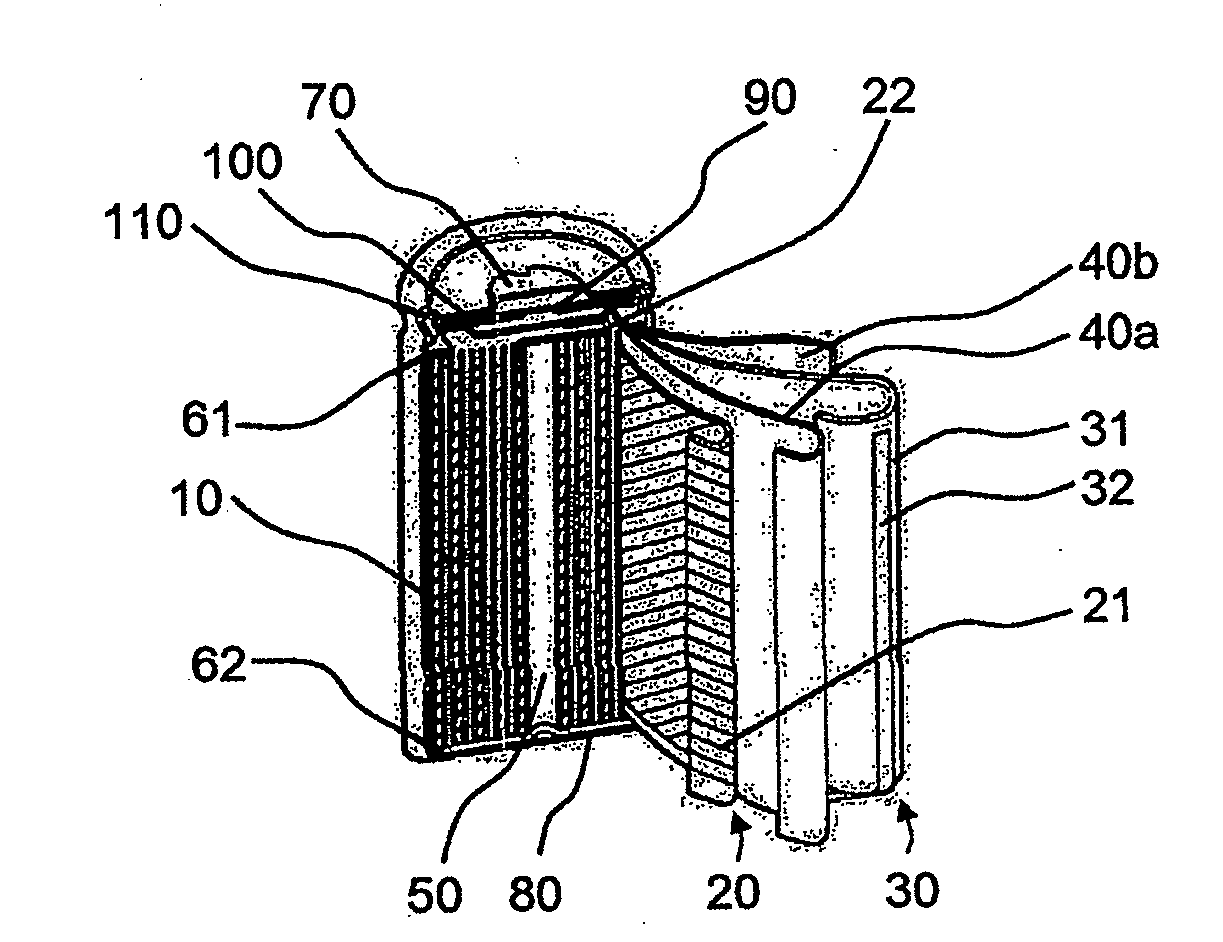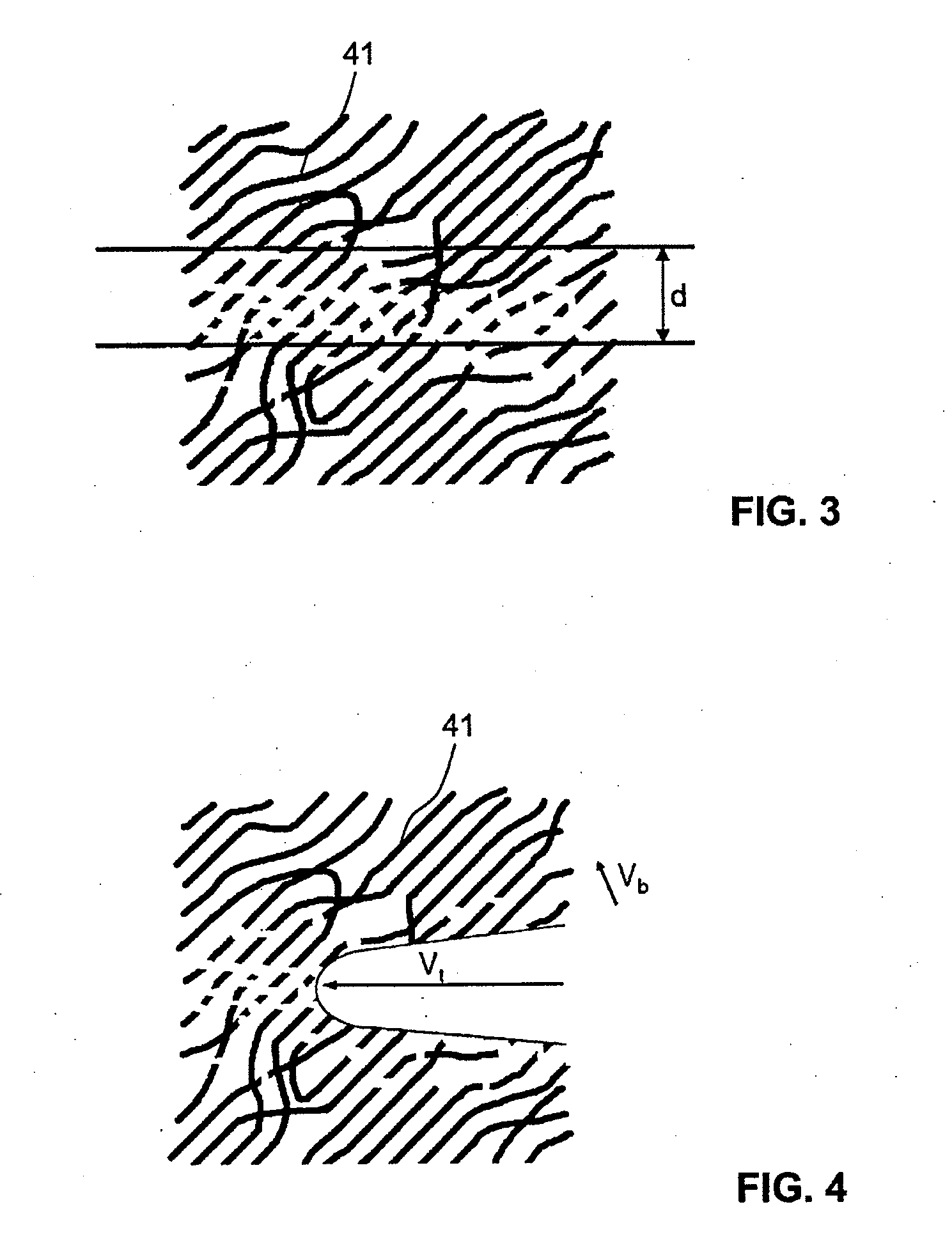Electrochemical energy store comprising a separator
- Summary
- Abstract
- Description
- Claims
- Application Information
AI Technical Summary
Benefits of technology
Problems solved by technology
Method used
Image
Examples
Embodiment Construction
[0042]FIG. 1 shows a perspective illustration of a preferred exemplary embodiment of an electrochemical energy store according to the invention. This electrochemical energy store, which is described below, is a secondary battery in the form of a lithium ion battery. However, this embodiment is only one possible example of an electrochemical energy store according to the invention. Self-evidently, the separator according to the invention can also be used in other electrochemical energy stores.
[0043]In this embodiment, the battery has an essentially cylindrical housing 10 having a circumferential side wall which contains, as the most important parts of the battery, a positively charged electrode 20 and a negatively charged electrode 30 isolated by porous separators 40a and 40b. In addition, the housing 10 contains an electrolyte which is in chemical contact with the two electrodes 20, 30 and which surrounds the two separators 40a, 40b, wetting them in the process. In this case, the ne...
PUM
 Login to View More
Login to View More Abstract
Description
Claims
Application Information
 Login to View More
Login to View More - R&D
- Intellectual Property
- Life Sciences
- Materials
- Tech Scout
- Unparalleled Data Quality
- Higher Quality Content
- 60% Fewer Hallucinations
Browse by: Latest US Patents, China's latest patents, Technical Efficacy Thesaurus, Application Domain, Technology Topic, Popular Technical Reports.
© 2025 PatSnap. All rights reserved.Legal|Privacy policy|Modern Slavery Act Transparency Statement|Sitemap|About US| Contact US: help@patsnap.com



